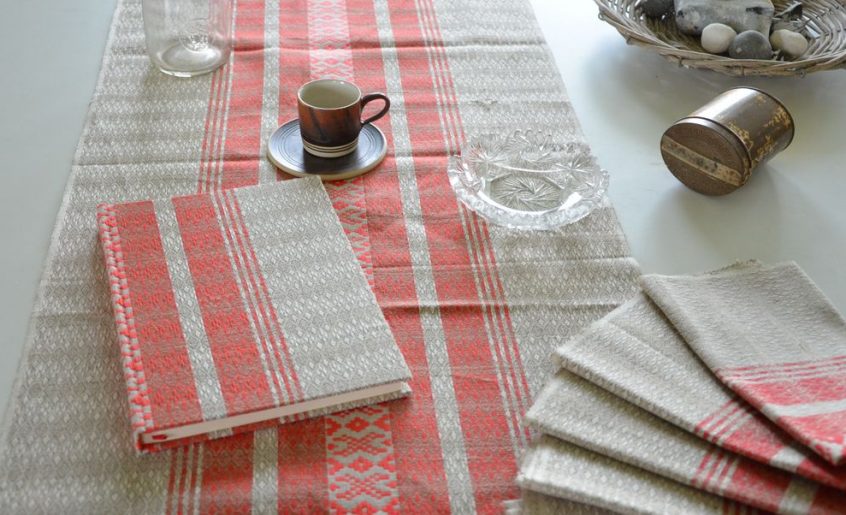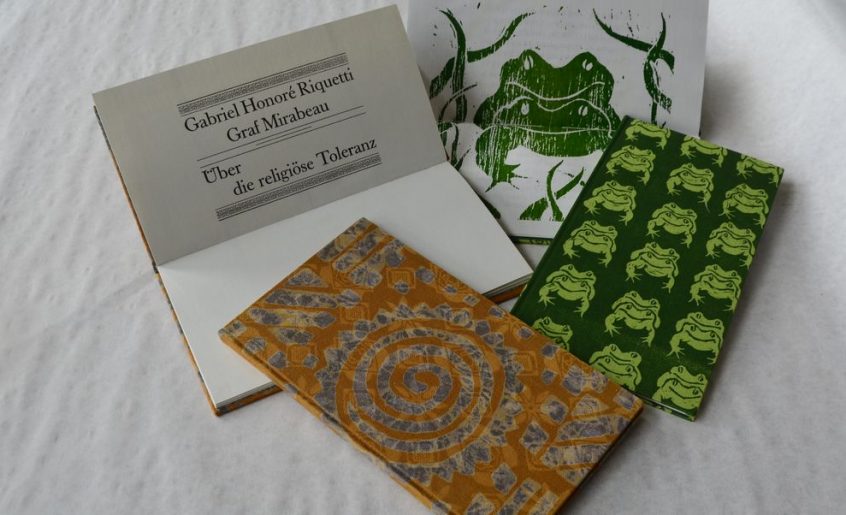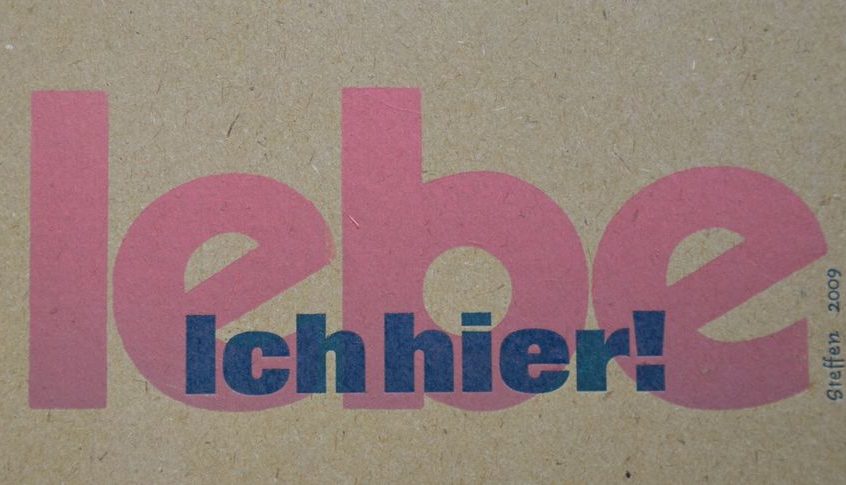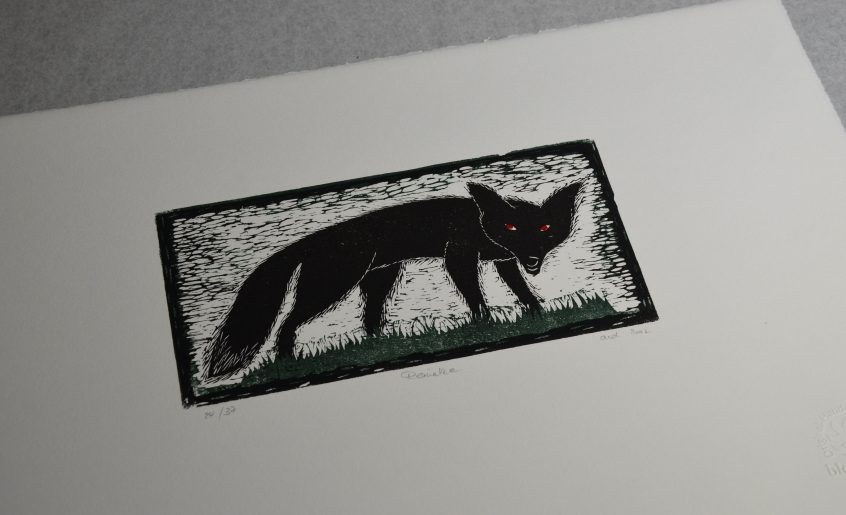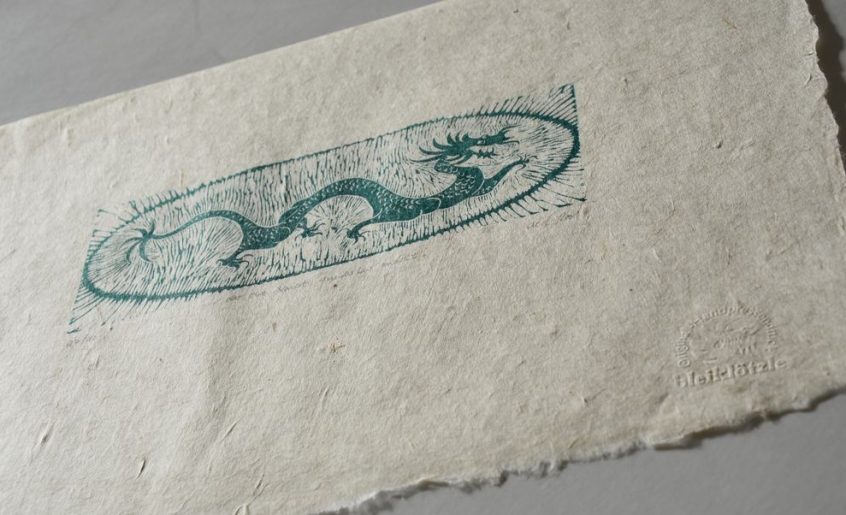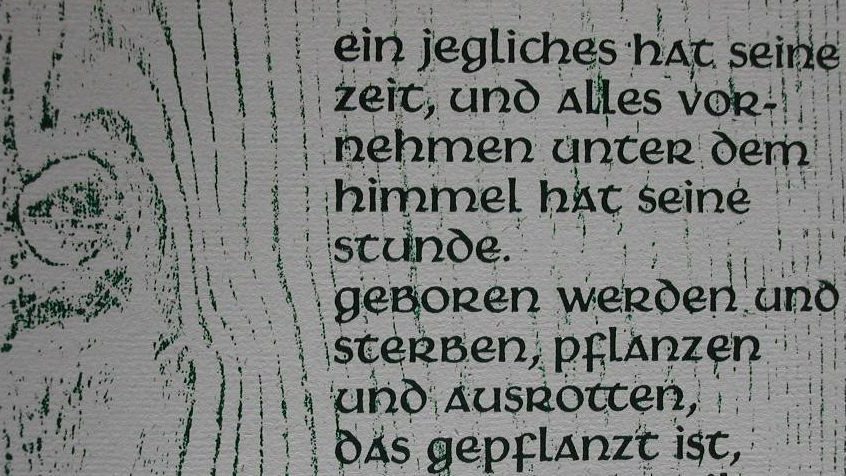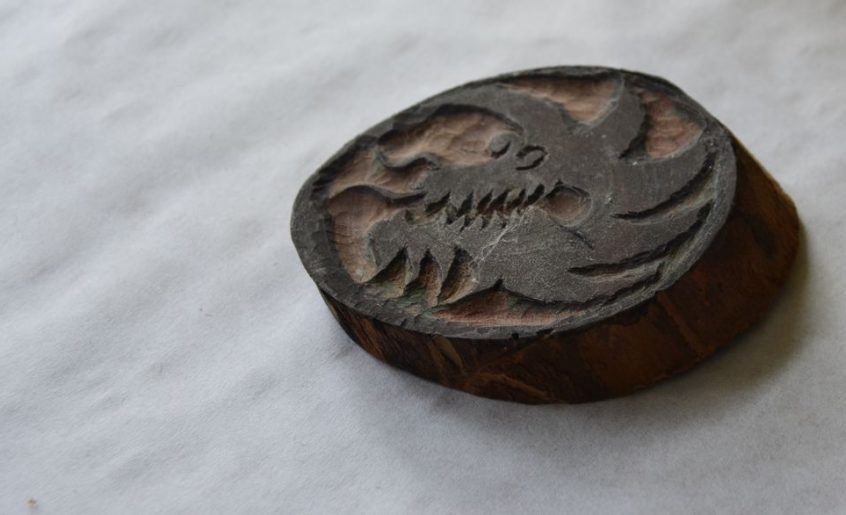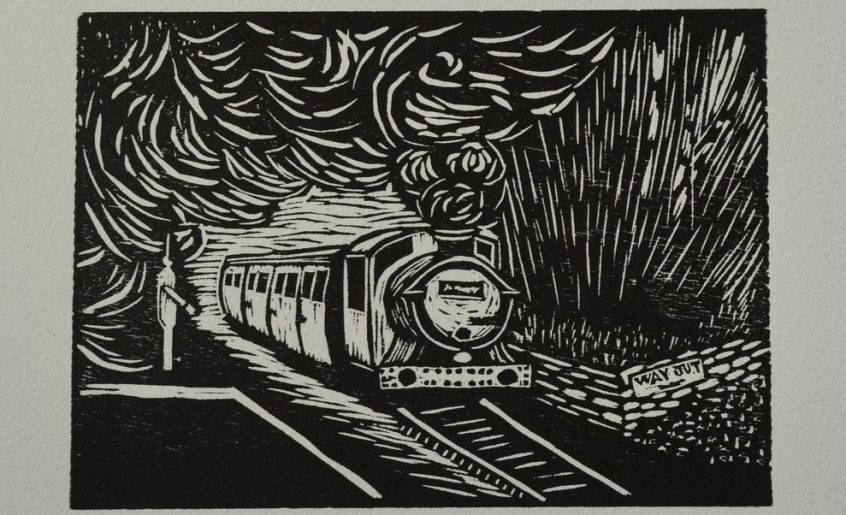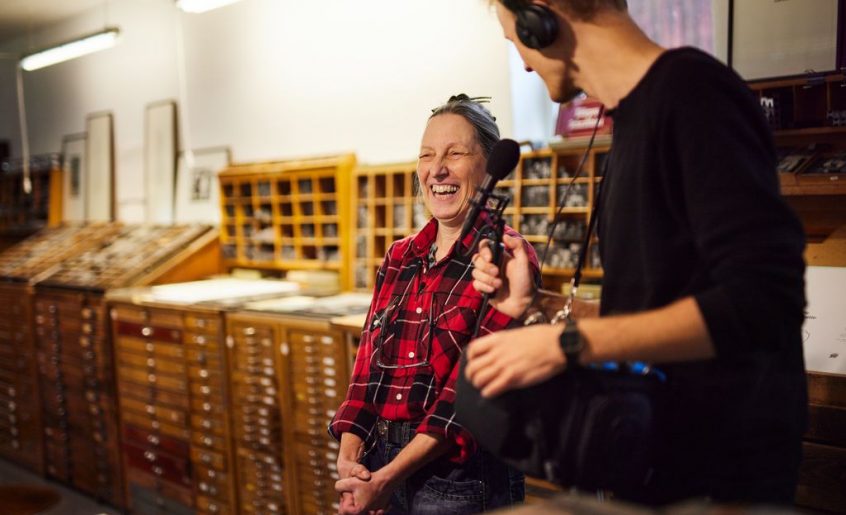In my childhood every now and then little boxes would surface from somewhere, which were in a special way fascinating for me. Inside the boxes there would be delicate fans artistically painted in Chinese style, wooden chopsticks beautifully decorated with mother-of-pearl, or tiny animals carved from jade. The boxes came from the Far East, most likely from China or Japan, …
Over the summer I meet Karl Kretschmer in Mosbach. He is moving his printing office and sells off leftover paper stock. I choose a few very nice qualities that will come in handy for a number of print projects in the course of the coming years. After all is loaded Karl states there is still space in the car boot …
and Typography is Interpretation. The gardener plants trees and shrubs, perennials and summer flowers, giving each their respective placing, so every single one can have their specific effect over the course of the year. He makes a strictly planned garden come into existence with straight lines and borders, or a romantic garden with curving edges flowing into bespoke corners. He …
My husband and I continue to travel to Heiner Buser for casting our own type on his Monotype machines. Additionally there is more used metal type coming in, amongst it Reporter, a brush stroke style, Amati and more of Mistral. The latter counts as a script-and-brush style and is rather special. The lower case specimens are tricky to identify. The …
Over the period from 2001 to 2003 my husband and I will be casting three typefaces on Heiner Buser‘s Monotype machines at his Greno printing office. The first to be cast is 10pt Baskerville. Casting type ourselves comes with the option of having a greater amount of type on stock – for longer texts, that is for books. The font …
A printing office in the region of Allgäu near the German parts of the Alps needs to get rid of part of its letterpress equipment including metal type. The town is just a one and a half hour’s car drive away from where the studio is. I spend one day sorting the metal type from various cabinets into the ones …
The 20th century is on its last legs and nearing its end. Letterpress printing using movable type came into use proper by the end of the 15th century – greatly helped by Johannes Gutenberg. During the 1970s it quickly lost its dominance. New printing techniques were quicker, did not need as much space and would involve less staff. Being able …
Probably this way: At the end of the 1970s I bought a camera, a Nikon FM. A tough tool, for proper work. No automatic functions. It‘ll accompany me for more than 30 years: on Scottisch peat bogs, on Swedish glaciers, in the primeval forests of Poland, while touring England – the camera would be my robust sketch book always, wherever. …
In the years of my childhood and youth I just loved trains. When I was little we lived in Aachen and I insisted to go and see the steam trains. On Sundays we‘d head for the station and watch the powerful locomotives do their work, reversing out – it was a terminal station. When I was 5, I asked Santa …
„Crafts meets Culture“ is a joined projekt of the districts of Herford and Minden-Lübbecke – sponsored by Northrhine-Westphalia. Cultural coordinators currently are Niklas Bengtsson (for Herford) and Daniela Daus (für Minden-Lübbecke). Contributions and details can be found on the respective website at: https://www.muehlenkreis.de/Kultur-Projekte/HANDWERK-TRIFFT-KULTUR/?&La=1 One main topic within this project currently is why and how joung people take up old crafts. …
